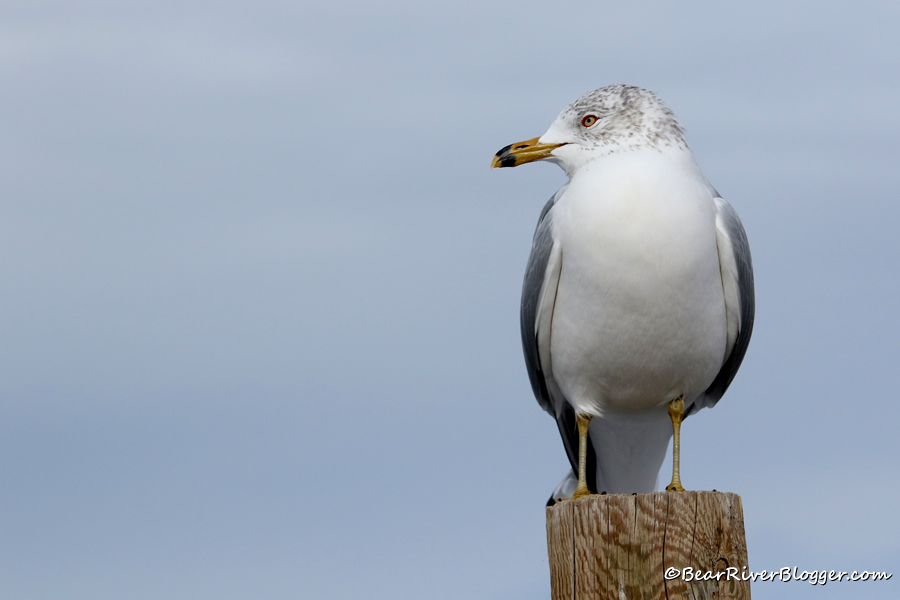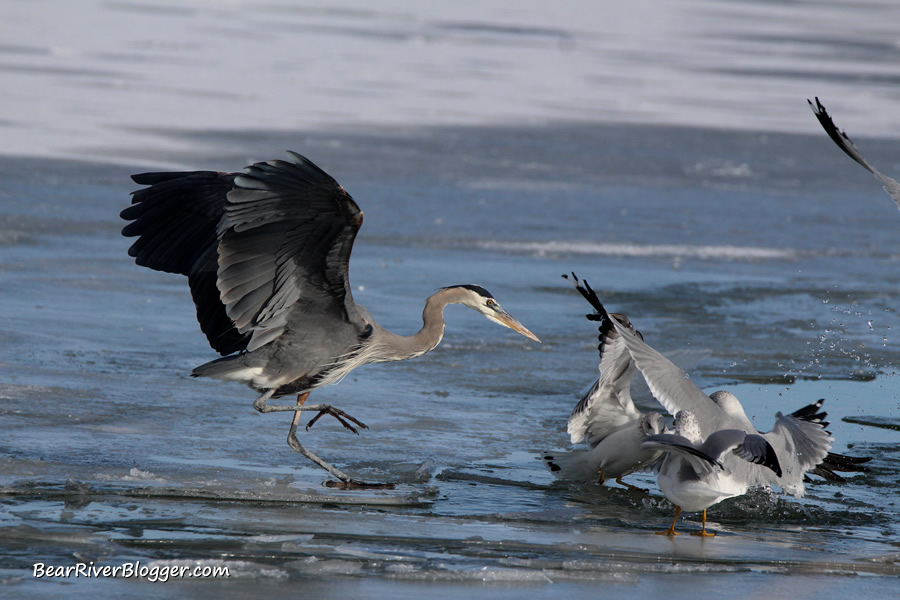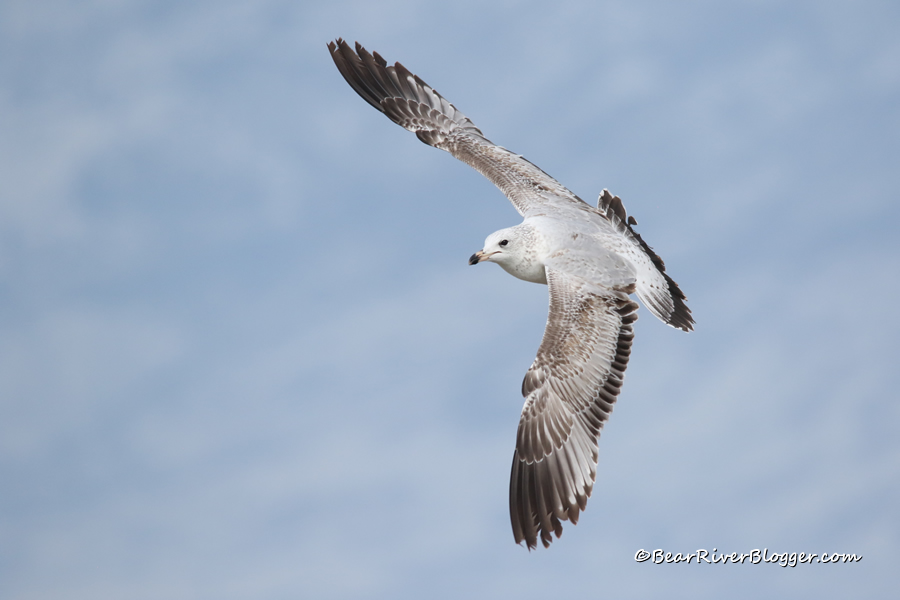I’m going to just come out and say it, the Ring-billed gull oftentimes gets mislabeled, maybe even maligned a little bit and quite unfairly I might add, as a nuisance bird of sorts and it doesn’t get much, if any at all, love and attention from a sizeable portion of the “non-birding” general public it seems.
In all honesty, I’ll admit when I was young and before the birdwatching bug was firmly planted in my soul by my father, I, too, ridiculed this particular bird each and every time I saw one fighting over a discarded food container or a dropped hotdog in a convenience store or restaurant parking lot.
It seemed the only time I ever saw one was in the heart of the city foraging for food so, naturally, over time I just figured, ignorantly, of course, they lived in the gas station parking lot down the street.

But even as a kid with absolutely no birding knowledge at the time I was wrong, dead wrong in fact, in unfairly judging the Ring-billed gull by completely misunderstanding this most strikingly beautiful bird just from a few casual observations on my way to school.
Sadly, this particular gull continues to get labeled by society as a nuisance bird solely because it has adapted and learned to forage in urban areas on litter and waste that we humans leave behind.
Ring-billed gulls have one of the most varied and extensive diets in the bird world, including rodents, fish, eggs, insects, worms, grains, and, yes, even garbage and food waste from our urban cities and towns and it’s quite ironic that this ability to forage and survive in the heart of modern civilization is, well, also the reason it gets a bad rap from society.
In fact, the Ring-billed gull’s diet is so varied it can eat almost anything that has some level of food value and nutrition to it but, unfortunately, that same variability is also a temptress and it sometimes causes a few, if not more, of these gulls to abandon a more natural food source by leading them to urban locations to scavenge for the tiniest morsel of food waste in our cities and towns.
In contrast, however, to this gull’s tendency to scavenge through waste, this particular bird has also learned a couple most unique and quite intelligent feeding behaviors that should, in all honesty, balance out the scales of public opinion for the Ring-billed gull on how and where it feeds.

Interestingly enough, during spring, summer, or even fall, find a farmer who is plowing a field here in northern Utah and you will almost always find Ring-billed gulls purposely following the tractor to forage in the freshly turned-over earth for worms and other terrestrial insects.
In addition, during the dreads of winter when most other birds have migrated south for the season, the Ring-billed gull can be found on the Bear River Migratory Bird Refuge auto tour route around small, open pockets of water in hopes of stealing small fish from golden-eyes as these late-season ducks dive under the icy waters in search of an aquatic meal.
Oftentimes they have to out-compete a hungry and much larger great blue heron for the spoils but the agile Ring-billed gull can hold his own against the towering heron patiently standing nearby on the edge of ice.
Now I don’t know about you but for me, that level of intelligence is well worth my admiration and attention, not to mention some well-deserved time in front of my camera lens.

As such, a couple weeks ago I found myself heading south for the day and, having a camera conveniently placed in the passenger seat next to me, I purposely took a slight detour from my travels and ended up at the Farmington Bay Wildlife Management Area with one and only one intent firmly in mind, to simply go photograph some birds.
Being the middle of winter I wasn’t expecting a lot of different birds to photograph but I knew if the chips were down I could always find a Ring-billed gull on a pole near the southernmost parking lot on the gravel roadway.
And as expected, numerous Ring-billed gulls were on location but one in particular, a first or second-year winter-cycle gull, denoted by its brown, mottled juvenile plumage, immediately caught my eye and was the focus of my attention for a while as I tried to overcome the low light and capture a few inflight images, if at all possible, of this most strikingly adorned bird.
With its unique young-adult winter plumage this particular bird stood out from the rest of the gulls, mostly adults I’d say by comparison, that were feverishly circling and diving into the icy water below.
Maybe I am the only one who thinks this as most other birdwatchers I know and talk with tend to favor adult plumaged birds over their juvenile counterparts but, for me at least, I think this particular Ring-billed gull was quite stunning as it flew against the soft clouds and wintery sky backdrop, despite it most obviously being the youngest bird in the group.
Thankfully, there was enough light for my camera to effectively photograph the bird in flight, allowing me to come home with a few decent images of the bird so I could write this blog post and display just how beautiful these sometimes maligned gulls are.

I hope this particular blog post helps shed a different light on gulls, in general, and more importantly on Ring-billed gulls, in particular, as gulls as a whole seem to be a somewhat much lesser-appreciated family of birds by society for some reason, most likely due to their willingness and ability to forage for our waste foods in places not commonly visited by other birds.
If you are a birdwatcher, nature photographer, or just someone who enjoys a few minutes in our outdoor world, I offer you to head on over to our subscribe page and sign up for email notifications for future blog posts where we share our love for nature, as well as a few photography tips, along the way.
(Instantly Better Photographs. For short nature photography tips like this one and interesting stories about the natural world around us, check out our Bear River Blogger channel on YouTube for videos and updates from our travels while out in nature, both on and off of the famed Bear River Migratory Bird Refuge.)



